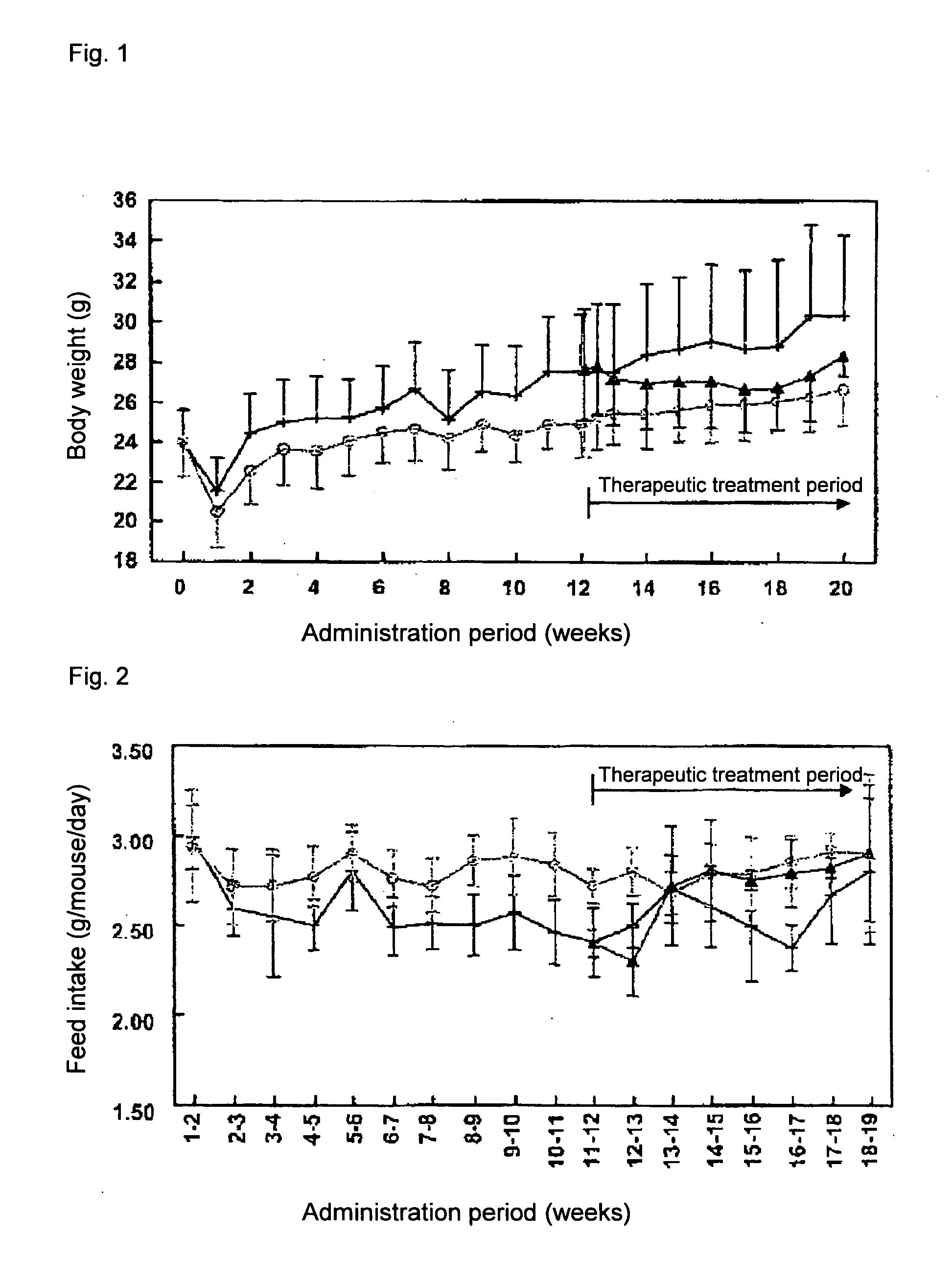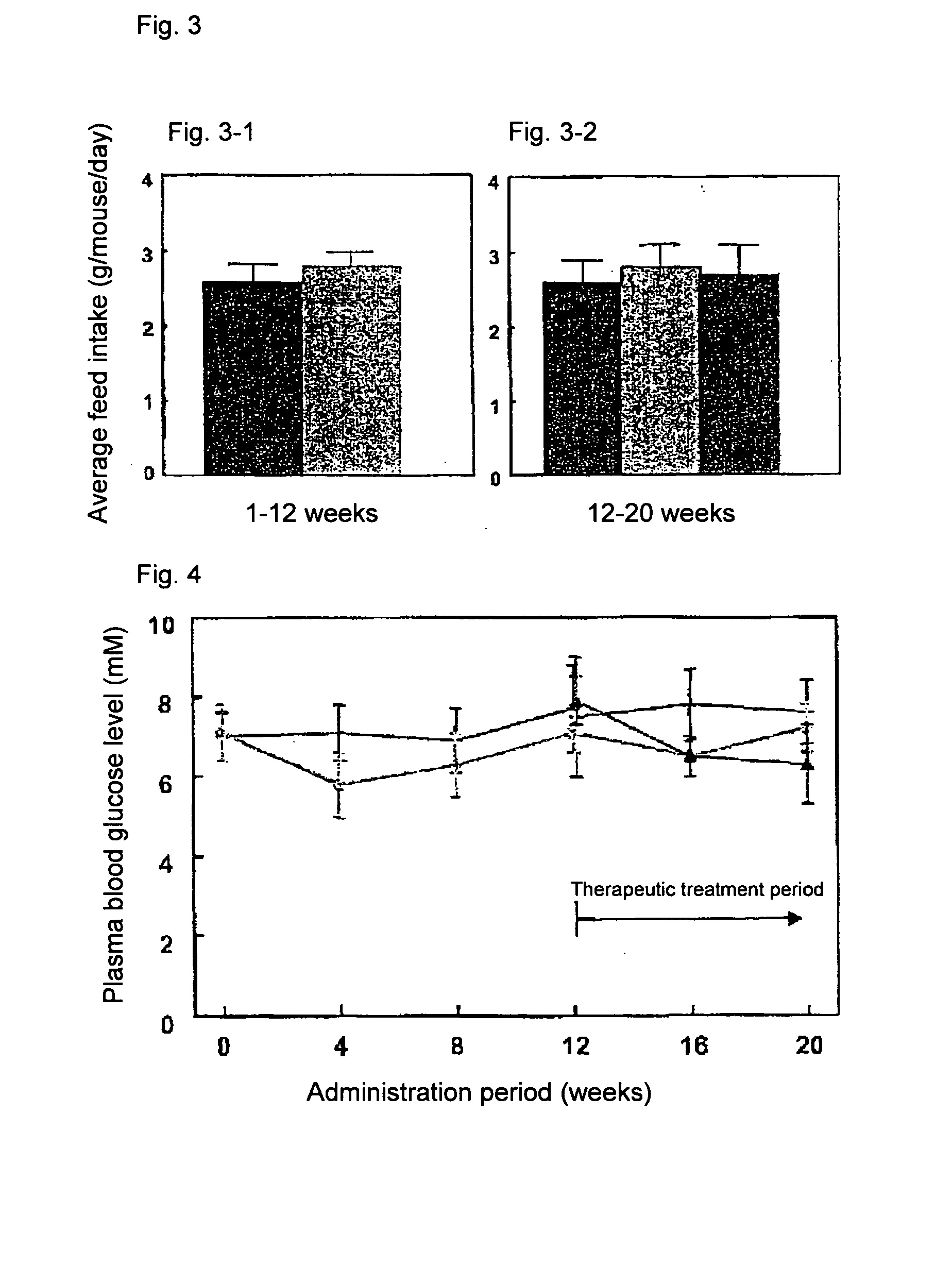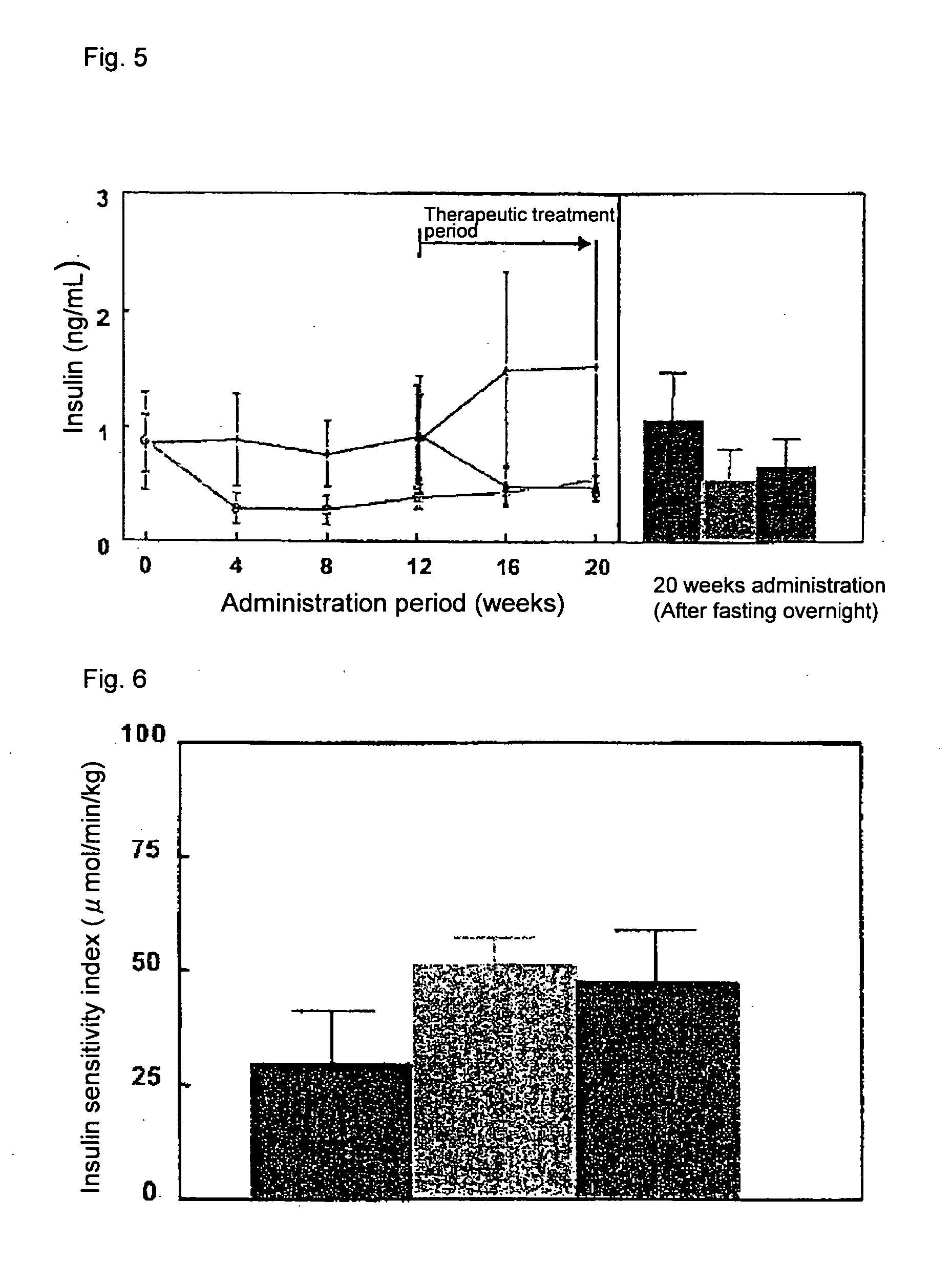Insulin Resistance-Improving Agent
a technology of improving agent and resistance, applied in the field of improving agent, can solve the problems of increasing adipose tissue, artisan would not have been able to relate the agents, and unable to achieve the effects of reducing the number of adipose tissue,
- Summary
- Abstract
- Description
- Claims
- Application Information
AI Technical Summary
Benefits of technology
Problems solved by technology
Method used
Image
Examples
example 1
1. Test Method
[0072] ApoE3 Leiden mice (male, TNO Pharma, Leiden, Netherlands) (n=45) were fed with a high fat diet (45.4% fat) for 3 weeks and divided into two groups based on body weight and serum parameters (total cholesterol (TC), triglyceride level (TG) and glucose level (Glc)). One group (n=30) was continuously fed with the high fat diet (high fat diet group), and the other group (n=15) with the high fat diet containing 1.5% (w / w) colestimide (colestimide prophylactic treatment group).
[0073] Twelve weeks later, the high fat diet group was further divided into two groups based on body weight and the aforementioned serum parameters (TC, TG, Glc). One group was fed with the high fat diet (control group, n=15), and the other group with the high fat diet containing 1.5% (w / w) colestimide (colestimide therapeutic treatment group, n=15).
[0074] Eight weeks later, insulin resistance was measured by the hyperinsulinemic clamp method. An indwelling needle was inserted into the caudal...
example 2
1. Test Method
[0085] KKAy mice (male, Clea Japan, Inc., n=8) were used. The control group was fed with a high fat diet (23.6% fat), and the colestimide group was fed with the high fat diet containing 2% colestimide. A glucose tolerance test was performed according to a conventional method after 2 weeks of the treatment. The mice were fasted overnight, and blood was collected before loading of glucose. Then, a glucose solution was orally given, and blood glucose levels were measured after 30, 60, 90 and 120 minutes. The blood glucose level AUCs (0 to 120 min) were calculated by using the blood glucose levels obtained. The fasting blood glucose levels and the fasting insulin levels were measured by using the blood samples collected before the loading of glucose.
2. Results
(1) Fasting Blood Glucose Levels
[0086] Fasting blood glucose levels in the control group and the colestimide group are shown in FIG. 8-1. The fasting blood glucose levels in the colestimide group significantly ...
example 3
1. Test Method
[0090] KKAy mice (male, Clea Japan, Inc., n=8) were used. The control group was fed with a high fat diet (23.6% fat), and the colesevelam hydrochloride group was fed with the high fat diet containing 2% colesevelam hydrochloride. A glucose tolerance test was performed according to a conventional method after 2 weeks of the treatment. The mice were fasted overnight, and blood was collected before loading of glucose. Then, a glucose solution was orally given, and blood glucose levels were measured after 30, 60, 90 and 120 minutes. The blood glucose level AUCs (0 to 120 min) were calculated by using the blood glucose levels obtained. The fasting blood glucose levels and the fasting insulin levels were measured by using the blood samples collected before the loading of glucose.
2. Results
(1) Fasting Blood Glucose Levels
[0091] Fasting blood glucose levels in the control group and the colesevelam hydrochloride group are shown in FIG. 9-1. The fasting blood glucose leve...
PUM
| Property | Measurement | Unit |
|---|---|---|
| Electrical resistance | aaaaa | aaaaa |
| Acidity | aaaaa | aaaaa |
Abstract
Description
Claims
Application Information
 Login to View More
Login to View More - R&D
- Intellectual Property
- Life Sciences
- Materials
- Tech Scout
- Unparalleled Data Quality
- Higher Quality Content
- 60% Fewer Hallucinations
Browse by: Latest US Patents, China's latest patents, Technical Efficacy Thesaurus, Application Domain, Technology Topic, Popular Technical Reports.
© 2025 PatSnap. All rights reserved.Legal|Privacy policy|Modern Slavery Act Transparency Statement|Sitemap|About US| Contact US: help@patsnap.com



